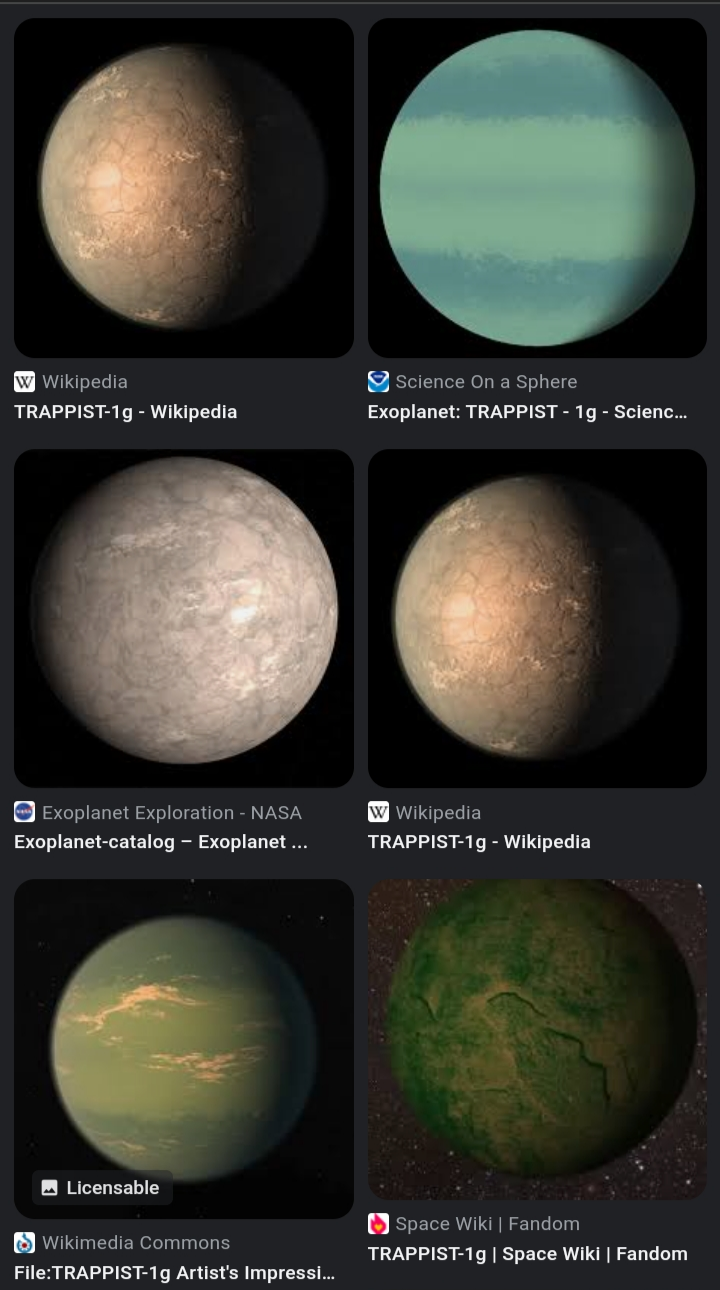It looks like you're using an Ad Blocker.
Please white-list or disable AboveTopSecret.com in your ad-blocking tool.
Thank you.
Some features of ATS will be disabled while you continue to use an ad-blocker.
18
share:
The news many of us have been waiting for was revealed at the JWST symposium held in Baltimore a couple of days ago , there are no pictures or
announcements yet as the data is still being worked on and reviewed but initial results show that TRAPPIST-1g , an Earth sized planet , probably
doesn’t have a hydrogen-rich atmosphere like the gas planets in our solar System so it could possibly have an atmosphere conducive to life.... or no
atmosphere at all.
The TRAPPIST-1 system is just 39 light-years from Earth.
Exciting times.
The TRAPPIST-1 system is just 39 light-years from Earth.
Benneke showed the first JWST studies of TRAPPIST-1g. So far, the telescope has been able to make out that it probably doesn’t have a hydrogen-rich atmosphere — which would be relatively easy to spot because it is so physically large. That could mean that the planet has a denser atmosphere, made of heavier molecules, such as carbon dioxide, or no atmosphere at all.
JWST studies planetary atmospheres primarily by watching how they filter starlight shining through them as they pass in front of the star. Which molecules make up a planet’s atmosphere can indicate how it evolved and whether it might have life on its surface. It will take more observations and time to analyse the data so far collected, before researchers will know if TRAPPIST-1g has an atmosphere, and if so what it is made of.
In a poster presentation at the conference, Olivia Lim of the University of Montreal showed two JWST observations of the innermost planet in the system, TRAPPIST-1b. She, too, has not been able to tease out a signal indicating the planet’s atmosphere just yet. But preliminary studies suggest that it, like planet 1g, probably doesn’t have a puffy, hydrogen-rich atmosphere.
Lim has several more observations of other TRAPPIST-1 planets already in-hand, including one taken last week that she hasn’t had time to look at yet in the crush of JWST results. “It’s hectic,” she says.
But more results on the extraordinary planetary system are on the way, Colón says: “Within the next year we’ll have a family portrait.”
www.nature.com...
Exciting times.
I could've sworn JWST looked at trappist back in May... But the data was under an exclusivity period to the research team that requested it.
a reply to: gortex
Nice!
In my twisted mind I’m seeing a green planet with large blue oceans with a sky of real, big puffy white clouds.
How cool would that be?!?!!
Wookiees, ie, Sasquatch walking freely. ya ya, I know.
Oh, and Sea Scallops the size of VW’s, with 500 lb. Salmon and Codfish filling the rivers……😎
Nice!
In my twisted mind I’m seeing a green planet with large blue oceans with a sky of real, big puffy white clouds.
How cool would that be?!?!!
Wookiees, ie, Sasquatch walking freely. ya ya, I know.
Oh, and Sea Scallops the size of VW’s, with 500 lb. Salmon and Codfish filling the rivers……😎
Webb's results for the second closest planet in the system to their Sun are in and with a dayside surface temperature of 107 degrees Celsius the
planet is either without an atmosphere or has a very thin one so no Ewoks there either .... but it is the coolest rocky exoplanet we've mapped so
far.
They know the main attractions for us are TRAPPIST D and E so they're nibbling around the edges , such a tease , what's the betting H will be next.
Dear NASA , deliver us the Ewoks !
They know the main attractions for us are TRAPPIST D and E so they're nibbling around the edges , such a tease , what's the betting H will be next.
New data from NASA's James Webb Space Telescope (JWST) shows that the atmosphere of a rocky exoplanet in the TRAPPIST-1 system is either non-existent or incredibly thin, making it unfavorable for hosting life as we know it.
Astronomers using JWST were able to calculate the amount of heat energy coming from TRAPPIST-1 c, revealing that the dayside temperature of the rocky world is about 225 degrees Fahrenheit (107 degrees Celsius) — the coolest rocky exoplanet ever characterized. At this temperature, the exoplanet's atmosphere is likely extremely thin, if it exists at all, according to a statement from NASA.
www.space.com...
Dear NASA , deliver us the Ewoks !
new topics
-
Trump is NOT Racist
US Political Madness: 24 minutes ago -
"I'm seeing Red" by Jesslee and the Marine
Music: 1 hours ago -
Black Holes Could Be The Mysterious Force Expanding The Universe
Science & Technology: 2 hours ago -
Kamala is running pro Palestine ads While simultaneously running pro Israel ads
2024 Elections: 5 hours ago -
Trump holds final campaign rally in Michigan before voting begins Tuesday
2024 Elections: 5 hours ago -
Almost Home
Short Stories: 8 hours ago -
Kamala finally builds a wall...around her home in DC
Jokes, Puns, & Pranks: 9 hours ago -
Ok Melbourne, Really?
Music: 11 hours ago
top topics
-
Predictions for the result
2024 Elections: 14 hours ago, 12 flags -
Trump holds final campaign rally in Michigan before voting begins Tuesday
2024 Elections: 5 hours ago, 11 flags -
Kamala is running pro Palestine ads While simultaneously running pro Israel ads
2024 Elections: 5 hours ago, 11 flags -
Kamala finally builds a wall...around her home in DC
Jokes, Puns, & Pranks: 9 hours ago, 8 flags -
Almost Home
Short Stories: 8 hours ago, 6 flags -
Black Holes Could Be The Mysterious Force Expanding The Universe
Science & Technology: 2 hours ago, 6 flags -
"I'm seeing Red" by Jesslee and the Marine
Music: 1 hours ago, 4 flags -
Ok Melbourne, Really?
Music: 11 hours ago, 1 flags -
Trump is NOT Racist
US Political Madness: 24 minutes ago, 1 flags
active topics
-
Trump is NOT Racist
US Political Madness • 2 • : berbofthegreen -
Trump holds final campaign rally in Michigan before voting begins Tuesday
2024 Elections • 17 • : Vermilion -
True Voter Surpression and an attack on a voter in North Carolina
US Political Madness • 115 • : xuenchen -
New York State Government Kills Peanut the Squirrel and Fred the Raccoon
US Political Madness • 61 • : hangedman13 -
Predictions for the result
2024 Elections • 109 • : Irishhaf -
Transgender woman accuses Hooters of sex-based discrimination for refusing to hire her
Rant • 22 • : zosimov -
Major 2024 Endorsements for Donald J. Trump to be U.S. President Again.
2024 Elections • 18 • : WeMustCare -
"I'm seeing Red" by Jesslee and the Marine
Music • 0 • : Lumenari -
-@TH3WH17ERABB17- -Q- ---TIME TO SHOW THE WORLD--- -Part- --44--
Dissecting Disinformation • 3105 • : 777Vader -
KAMALA HARRIS and Democrats - Acts of Desperation with less than 25 days till Nov 5th 2024.
2024 Elections • 129 • : WeMustCare
18


